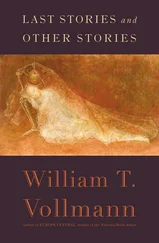181: Description of the Getty cult statue — After Getty Museum, pp. 104–5 (“Cult Statue of a Goddess, Perhaps Aphrodite”).
181: “The Inoue style is noted for its ability…” — Iwasaki and Brown, p. 281.
181: Mr. Kanze on the origin of Inoue dance — Interview of 2005.
182: Inoue School as “most prestigious” style of geisha dance — Gallagher, p. 64.
182: Footnote — Mr. Mikata on the lack of meaning in comparing Noh and Inoue dance — Interview of October 2006.
183: Ogasawara style as precursor to geisha gestures — Gallagher, p. 100.
183: Footnote: Remarks of Masami-san on opening a door — Interview in Kanazawa, January 2008. Kawai Takako was the interpreter. (N.B.: Iwasaki and Brown [p. 93] give a detailed description of how to enter a room properly.) Percival Lowell, who believed in that equally beautiful, plausible illusion, the Martian canals, wrote in his Soul of the Far East (Strauss, p. 126) that a certain Japanese maiden’s “voice was only too human for heaven. Unconsciously it made the better part of a caress.” The way she poured tea resembled “some beautiful rite.”
183: Definition of transgender “passing” — Bornstein, p. 20.
183: Role of bush warbler droppings in whitening a geisha’s face — Peabody Museum, p. 113 (Andrew L. Maske, “Performance and Play: The Art and Accomplishments of Geisha”).
183: “Radiant as enamel” — Goossen, p. 87 (Okamoto Kanoko, “Portrait of an Old Geisha”).
184: Kawabata’s description of a prospective maiko: — The Old Capital , pp. 95–96. Another geisha of twenty is “sloping-shouldered, seemingly gentle.” Her “teeth were like white beads in her beautiful mouth.” In Beauty and Sadness he mentions the “rich color” of nipples never suckled by any baby (p. 118).
184: Meaning of one undecorated shoulder: senior maiko status — Gallagher, p. 214.
185: Kyoto geisha: Red symbolizes female pubescence — Cobb, p. 74.
186: Mr. Kanze on dissimilarity of geisha face to Noh masks — Interview of May 2005.
186: Ms. Nakamura on the same topic — Interview of 2004.
186: “A maiko in full costume approximates the Japanese ideal of feminine beauty…” — Iwasaki and Brown, p. 157.
186: “A Fan for You” (or “Fan to You”) — The syntax and calligraphy of this song (and also “Black Hair”) as written out by the ochaya-san Ms. Imamura, were both so archaic that my interpreter-translator Takako, a highly educated woman in late middle age, needed to enlist her mother’s help to modernize the words in Japanese she could understand and translate. One must admire Kyoto’s hold on the past. About this song Takako remarks: “A fan is considered a happy item, because its widening shape implies an ever more prosperous future.” The lyrics (slightly revised by WTV) run something like this:
You and I resemble the pivot-point of a fan whose leaves are bound together.
In the era of Han [ancient China], a lover of the Emperor placed a flower-patterned fan by their pillow.
Holding that fan, I feel leaves falling on my sleeve.
But the patterns drawn on the fan will not fall, which makes me happy.
Forever gracefully turn, pinwheel made with three fans!
Forever until the eighth generation.
You are mine, my dear you.
187: “Only fifty or sixty maiko remain in all Kyoto.” — Based on Gallagher, p. 158 (“as of the early 2000’s”). In Kanazawa, when the geisha Masami-san made her debut, there were more than eighty geishas in the Higashi pleasure district. When the musician Fukutaro-san made hers, there were more than seventy. In 2008, when I met them, there were fewer than fifty.
187: “Black Hair” — The meaning of the song is approximately (as written out by the ochaya-san, modernized by Takako’s mother, then translated by Takako, and slightly revised by me):
My black hair is linked to various memories of you.
When I comb my hair in my bed alone, I feel so desolate.
Although I am a wife with tight sleeves, I feel like complaining,
but I’m just a weak woman.
Beneath the quiet night sky comes the temple bell’s low sound.
Waking from a dream of last night, I fondly remember the happy memories,
But at the same time feel disconsolate.
Snow lies thick, not knowing my sadness.
Takako notes: “Black hair implies something that can easily come loose, suggesting that the happy memories may perhaps loosen and disperse. Accumulated snow here implies that the woman has much feeling for the man.”
187: Mention of “Dark Hair” in Snow Country — Op. cit., p. 74.
187: Mention of same in Tanizaki’s Makioka Sisters — Op. cit., pp. 164, 384. Once it is a dance performed by an unmentioned pupil, probably a geisha; once it is a piece of koto-music practiced by a housemaid.
188: Izumi Shikibu’s black hair poem — Keene, Seeds in the Heart , p. 296.
188: Footnote: “I hacked off at the roots the waist-length hair…” — Masuda, p. 121.
189: “Lovers, if you flee not from hot desire…” — Barnstone, p. 211 (“An Ageless Lover”). See Appendix C, No. 8 for a list of her charms.
190: Footnote: Purpose of red outlining of eyes (she seems to assert that the eye is red all around, with no black) — Buisson, p. 96.
190: Mr. Mikata on Inoue the Fourth’s “practice, practice and still practice” — Interview of October 2006.
191: “If the shite dances and acts with elegant speeches…” — Zeami, p. 65.
191: “Secrecy is the essential art of geisha.” — Cobb, p. 17 (Mayumi, Tokyo geisha).
191: “I don’t want to know their tricks.” — Ibid., p. 96 (Kyoto client).
191: Use of the fan to represent joy — Cavaye, Griffith and Senda, p. 180.
192: “He did not reduce his characters to a mechanism…” — The Nibelungenlied , translator’s afterword, p. 314.
192: Erotic allure of black high heels’ red soles — InStyle , January 2008, p. 109 (“Your Most Stylish Year Ever: 365 Star Style Secrets,” no. 8: Lindsay Lohan).
193: Meaning of makeup on the back of a geisha’s neck: genitals — Cobb, p. 60 (unnamed geisha); photo of this makeup being applied is on p. 61. Gallagher simply remarks (p. 146) that there is “much to say” about this decoration of “the sexiest of all parts of the decently clothed body.”
193: Geisha makeup as “electrifying” — Gallagher, p. 144.
193: Mr. Mikata on Noh training — Interview of October 2006.
193: Mr. Umewaka’s grandfather and the loveliness of imaginary cherry blossoms — Umewaka Rokuro, “On the 45th Anniversary of My Stage Career.”
199: “Genuine Perfect Fluency in fact has no connection with the actor’s conscious artistic intentions…” — Zeami, p. 135 (“Shugyoku tokka”).
199: Chobunsai Eishi, Chokosai Eisho — Seen at the Ota Ukiyo-e Museum in Tokyo, 2006.
200: Reason for white makeup in Heian times — Iwasaki and Brown, p. 159.
201: Lady Nijo at the Shoren-in and Gion Shrine — Op. cit., pp. 17, 160.
14: “SHE CANNOT DO ANYTHING ELSE”
202: Remarks of Kofumi-san and Danyu-san — Same session of October 2006.
202: “A gentleman would place a handkerchief…” — Hanna, p. 180.
204: “As early as eleven.” — Cobb, p. 17 (Mayumi, Tokyo geisha).
204: “The romanticization of geisha life…” — Masuda, pp. 6–7.
204: The tale of Takabayashi Ginji — Rath, pp. 1–4.
205: Footnote: “Women exist for the sake of men…” — Makuzu, p. 25.
206: “The actor will be able to discern clearly…” — Zeami, pp. 139–40 (“Shugyoku tokka”).
Читать дальше












